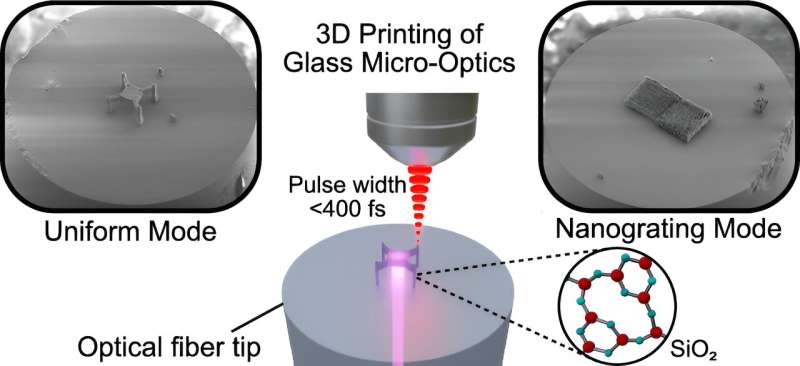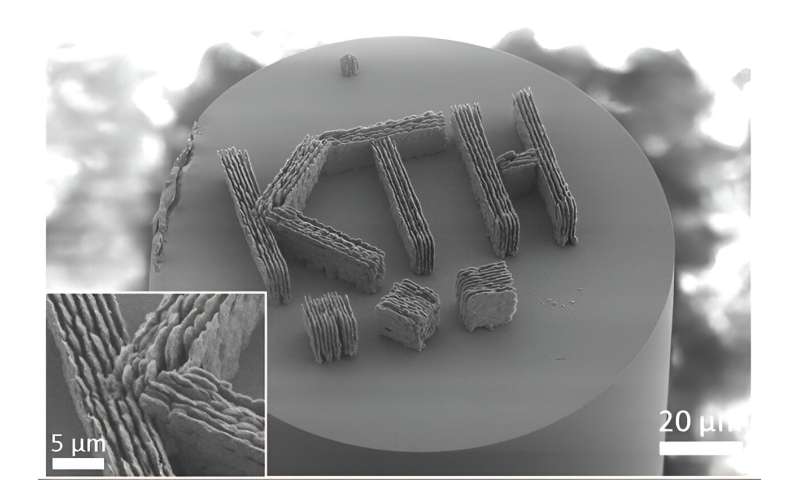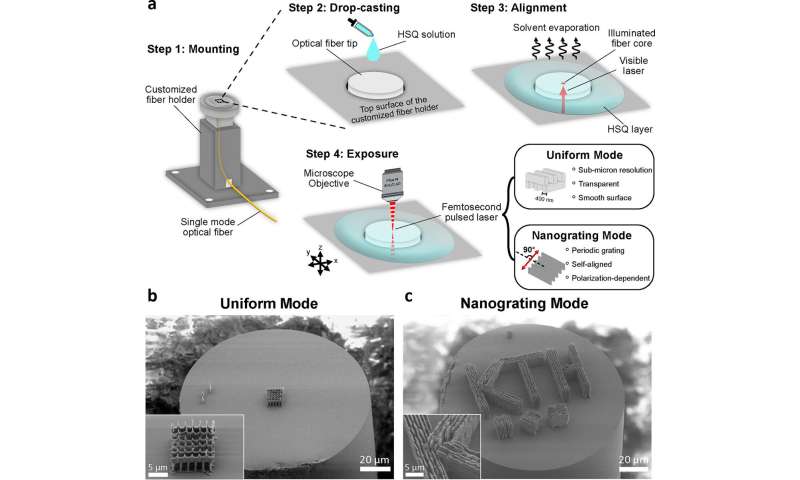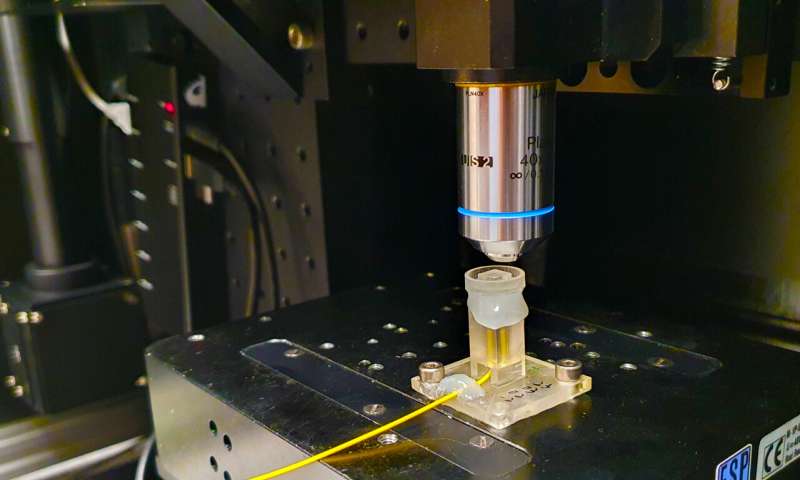This article has been reviewed according to Science X's editorial process and policies. Editors have highlighted the following attributes while ensuring the content's credibility:
fact-checked
peer-reviewed publication
trusted source
proofread
A thousand times smaller than a grain of sand—glass sensors 3D-printed on optical fiber

In a first for communications, researchers in Sweden 3D printed silica glass micro-optics on the tips of optic fibers—surfaces as small as the cross section of a human hair. The advance could enable faster internet and improved connectivity, as well as innovations like smaller sensors and imaging systems.
Reporting in the journal ACS Nano, researchers at KTH Royal Institute of Technology in Stockholm say integrating silica glass optical devices with optical fibers enables multiple innovations, including more sensitive remote sensors for environment and health care.
The printing techniques they report also could prove valuable in production of pharmaceuticals and chemicals.
KTH Professor Kristinn Gylfason says the method overcomes longstanding limitations in structuring optical fiber tips with silica glass, which he says often require high-temperature treatments that compromise the integrity of temperature-sensitive fiber coatings.
In contrast to other methods, the process begins with a base material that doesn't contain carbon. That means high temperatures are not needed to drive out carbon in order to make the glass structure transparent.
The study's lead author, Lee-Lun Lai, says the researchers printed a silica glass sensor that proved more resilient than a standard plastic-based sensor after multiple measurements.
-

3D printing 1,000 times smaller than a grain of sand Microscopic image of a printed glass demonstration structure on tip of optical fiber. Credit: Lee-Lun Lai, et al -

Printing process and example 3D structures in glass on optical fiber tips. (a) The fabrication process. Step 1: Mounting single-mode optical fiber in a customized fiber holder. Step 2: Drop-casting HSQ solution on the optical fiber tip. Step 3: Evaporating solvent. Injecting a visible laser from the other end of the fiber to illuminate the fiber core for alignment. Step 4: Exposing the HSQ layer with the femtosecond pulsed laser. Uniform Mode and Nanograting Mode can be selected by choice of exposure parameters. (b) A woodpile structure printed using Uniform Mode. The inset shows a close-up of the printed structure: the lateral width of each beam is below 400 nm. (c) Characters "KTH" and three blocks printed using Nanograting Mode. The inset shows that the three segments of the letter "K" are made of Nanogratings with distinct selected orientations. Credit: Lee-Lun Lai, et al. -

Microscopic image of a printed glass demonstration structure on tip of optical fiber. Credit: Lee-Lun Lai, et al.
"We demonstrated a glass refractive index sensor integrated onto the fiber tip that allowed us to measure the concentration of organic solvents. This measurement is challenging for polymer-based sensors due to the corrosiveness of the solvents," Lai says.
"These structures are so small you could fit 1,000 of them on the surface of a grain of sand, which is about the size of sensors being used today," says the study's co-author, Po-Han Huang.
The researchers also demonstrated a technique for printing nanogratings, ultra-small patterns etched onto surfaces at the nanometer scale. These are used to manipulate light in precise ways and have potential applications in quantum communication.
Gylfason says the ability to 3D print arbitrary glass structures directly on fiber tip opens new frontiers in photonics. "By bridging the gap between 3D printing and photonics, the implications of this research are far-reaching, with potential applications in microfluidic devices, MEMS accelerometers and fiber-integrated quantum emitters," he says.
More information: Lee-Lun Lai et al, 3D Printing of Glass Micro-Optics with Subwavelength Features on Optical Fiber Tips, ACS Nano (2024). DOI: 10.1021/acsnano.3c11030.
Journal information: ACS Nano
Provided by KTH Royal Institute of Technology





















